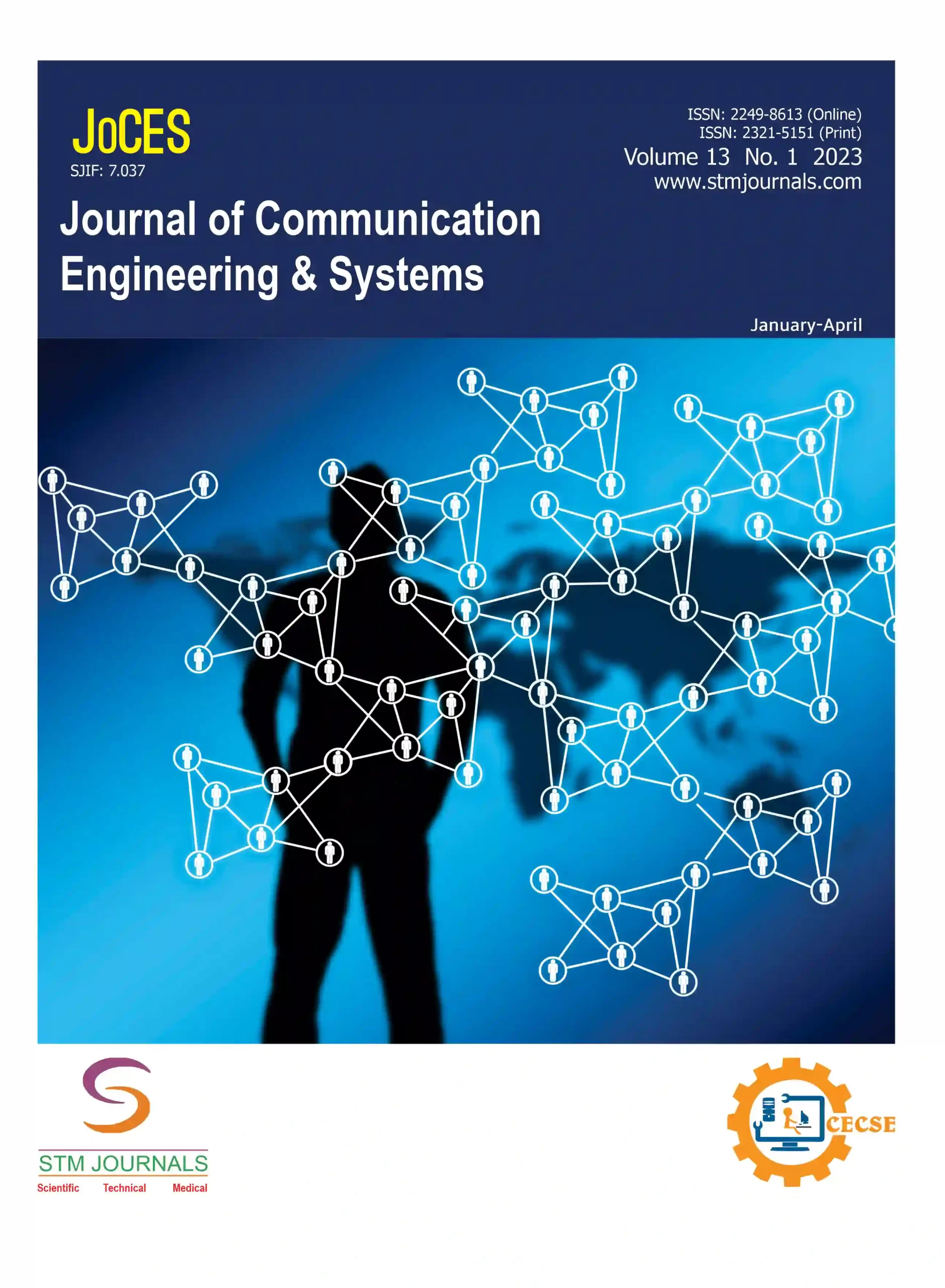[{“box”:0,”content”:”n[if 992 equals=”Open Access”]n
n
Open Access
nn
n
n[/if 992]n
n
n
n
n

n
Anand Sehgal, Prabhdeep Singh, Harsha, Raghav Vats
n
- n t
n
n
n[/foreach]
n
n[if 2099 not_equal=”Yes”]n
- [foreach 286] [if 1175 not_equal=””]n t
- Assistant Professor, Student, Student, Student Department of school of engineering and technology , The Northcap University, Gurugram, Department of school of engineering and technology, The Northcap university, Gurugram, Department of school of engineering and technology, The Northcap university, Gurugram, Department of school of engineering and technology and technology, The Northcap university, Gurugram Haryana, Haryana, Haryana, Haryana India, India, India, India
n[/if 1175][/foreach]
n[/if 2099][if 2099 equals=”Yes”][/if 2099]n
Abstract
nThe purpose of this study is to clarify how the development and deployment procedures of applications are impacted by cloud computing and microservices architecture, as these technologies become more widely used. Applications have moved significantly to the cloud in recent years in order to benefit from lower costs, elastic scalability, and other advantages. Simultaneously, a lot of businesses are switching from monolithic programs to microservices in order to get more agility, scalability, and adaptability. But moving to a microservices architecture hosted in the cloud also brings with it some new difficulties. Investigating the benefits of microservices on the cloud, this study will analyze prior research and case studies, including independent deploy ability and horizontal scalability. This study aims to provide light on how application development and deployment procedures are impacted by cloud computing and microservices architecture as these technologies gain traction. Recent years have seen a major migration of applications to the cloud in order to take advantage of cheaper pricing, elastic scalability, and other benefits. At the same time, many companies are moving away from monolithic applications and toward microservices in order to gain greater flexibility, scalability, and agility. However, switching to a cloud-hosted microservices design also presents some new challenges. This study will examine the benefits of microservices in the cloud, such as independent deploy ability and horizontal scalability, through a review of prior research and case studies.
n
Keywords: microservices architecture, cloud computing, application development, deployment, scalability
n[if 424 equals=”Regular Issue”][This article belongs to Journal of Communication Engineering & Systems(joces)]
n
n
n
n
n
nn[if 992 equals=”Open Access”] Full Text PDF Download[/if 992] n
nn[if 379 not_equal=””]n
Browse Figures
n
n
n[/if 379]n
References
n[if 1104 equals=””]n
- Alshuqayran N, Ali N, Evans R. A systematic mapping study in microservice architecture. In2016 IEEE 9th international conference on service-oriented computing and applications (SOCA) 2016 Nov 4 (pp. 44-51). IEEE.
- Mateus-Coelho N, Cruz-Cunha M, Ferreira LG. Security in microservices architectures. Procedia Computer Science. 2021 Jan 1;181:1225-36.
- Engström E, Runeson P. Software product line testing–a systematic mapping study. Information and Software Technology. 2011 Jan 1;53(1):2-13.
- Munaf RM, Ahmed J, Khakwani F, Rana T. Microservices architecture: Challenges and proposed conceptual design. In2019 International Conference on Communication Technologies (ComTech) 2019 Mar 20 (pp. 82-87). IEEE.
- Ivarsson M, Gorschek T. A method for evaluating rigor and industrial relevance of technology evaluations. Empirical Software Engineering. 2011 Jun;16:365-95.
- Jaccheri ML, Picco GP, Lago P. Eliciting software process models with the e 3 language. ACM Transactions on Software Engineering and Methodology (TOSEM). 1998 Oct 1;7(4):368-410.
- Balalaie A, Heydarnoori A, Jamshidi P. Microservices architecture enables devops: Migration to a cloud-native architecture. Ieee Software. 2016 Mar 18;33(3):42-52.
- Dragoni N, Giallorenzo S, Lafuente AL, Mazzara M, Montesi F, Mustafin R, Safina L. Microservices: yesterday, today, and tomorrow. Present and ulterior software engineering. 2017:195-216.
- Jamshidi P, Pahl C, Mendonça NC, Lewis J, Tilkov S. Microservices: The journey so far and challenges ahead. IEEE Software. 2018 May 4;35(3):24-35.
- Levcovitz A, Terra R, Valente MT. Towards a technique for extracting microservices from monolithic enterprise systems. arXiv preprint arXiv:1605.03175. 2016 May 10.
- Claus Pahl and Pooyan Jamshidi. Microservices: A Systematic Mapping Study. In Proceedings of the 6th International Conference on Cloud Computing and Services Science (CLOSER 2016). 2016;1:137-146.
- Pautasso C, Zimmermann O, Amundsen M, Lewis J, Josuttis N. Microservices in practice, part 1: Reality check and service design. IEEE software. 2017 Jan 1;34(01):91-8.
- Wolff E. Microservices: flexible software architecture. Addison-Wesley Professional; 2016 Oct 3.
- Yashwanth Medisetti. Industry Use cases — Jenkins – Yashwanth Medisetti – Medium [Internet]. Medium. Medium; 2021. Available from: https://yashwanthsaikrishna.medium.com/industry-use-cases-jenkins-ca9af9da05c4
nn[/if 1104][if 1104 not_equal=””]n
- [foreach 1102]n t
- [if 1106 equals=””], [/if 1106][if 1106 not_equal=””],[/if 1106]
n[/foreach]
n[/if 1104]
nn
nn[if 1114 equals=”Yes”]n
n[/if 1114]
n
n

n
n
n
n
n
| Volume | 14 | |
| [if 424 equals=”Regular Issue”]Issue[/if 424][if 424 equals=”Special Issue”]Special Issue[/if 424] [if 424 equals=”Conference”][/if 424] | 02 | |
| Received | April 9, 2024 | |
| Accepted | June 7, 2024 | |
| Published | June 29, 2024 |
n
n
n
n
n
n function myFunction2() {n var x = document.getElementById(“browsefigure”);n if (x.style.display === “block”) {n x.style.display = “none”;n }n else { x.style.display = “Block”; }n }n document.querySelector(“.prevBtn”).addEventListener(“click”, () => {n changeSlides(-1);n });n document.querySelector(“.nextBtn”).addEventListener(“click”, () => {n changeSlides(1);n });n var slideIndex = 1;n showSlides(slideIndex);n function changeSlides(n) {n showSlides((slideIndex += n));n }n function currentSlide(n) {n showSlides((slideIndex = n));n }n function showSlides(n) {n var i;n var slides = document.getElementsByClassName(“Slide”);n var dots = document.getElementsByClassName(“Navdot”);n if (n > slides.length) { slideIndex = 1; }n if (n (item.style.display = “none”));n Array.from(dots).forEach(n item => (item.className = item.className.replace(” selected”, “”))n );n slides[slideIndex – 1].style.display = “block”;n dots[slideIndex – 1].className += ” selected”;n }nn”}]

